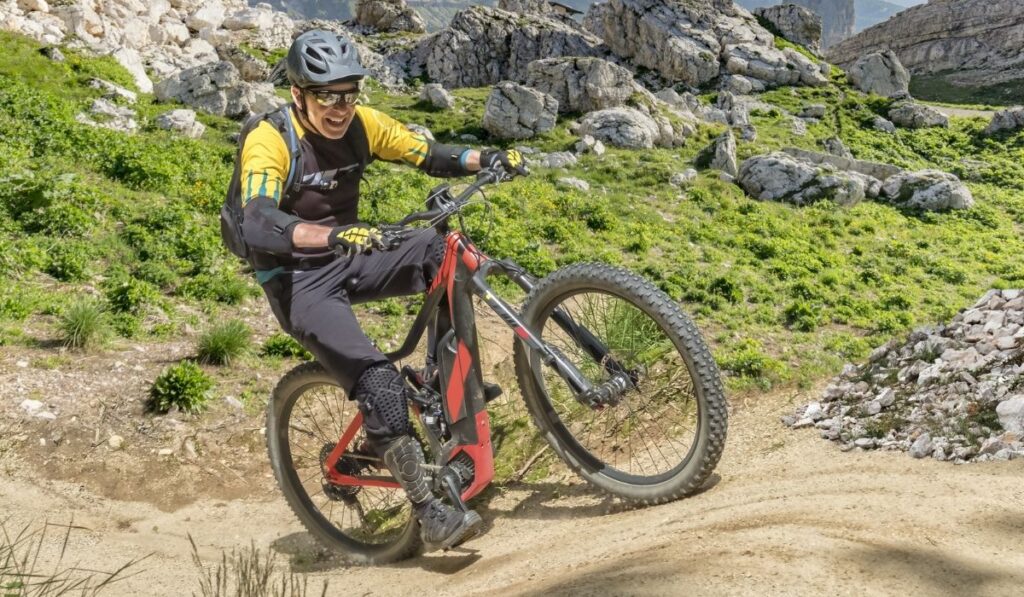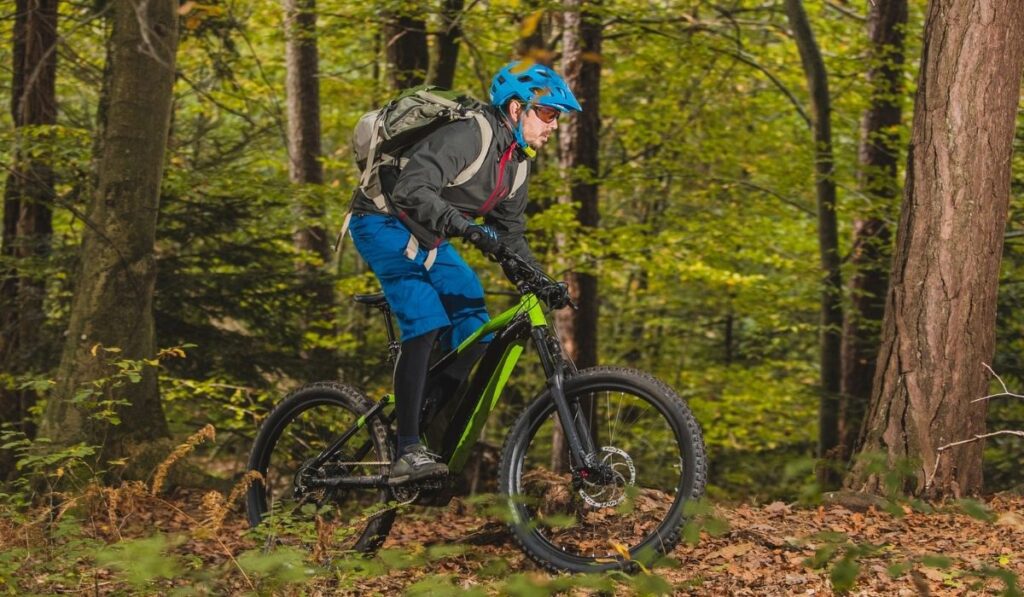The discussion surrounding the relationship between electric bikes and trail use is both controversial and heated. Both sides of the argument feel passionate about their viewpoint. But, where lies the truth? Do e-bikes damage trails or not?
Studies have confirmed that E-Bikes don’t damage trails any more than traditional mountain bikes do. That said, the added speed and motor support may annoy other riders if good etiquette and awareness of others on the trail aren’t maintained.
It can be hard to find your footing in the conversation surrounding this topic at first. Some individuals want to maintain the status quo and stick to tradition, while others are worried about safety and etiquette. On top of that, some e-bike riders just want to have fun. Read on for everything you need to know concerning this topic.
Can E-Bikes Really Cause Trail Damage?

One of the main arguments against electric bikes is the potential damage they could cause to trails and surrounding nature. This argument has been the source of many debates around relevant laws and regulations. However, electric bikes and E-MTBs might not be as damaging as people may believe.
One study found that Class 1 E-MTBs and traditional mountain bikes caused similar damage to trails. This study compared the amount of soil erosion/displacement on trails caused by Class 1 E-MTBs, conventional mountain bikes, and motorcycles.
The study shows that the damage caused by Class 1 E-MTBs and traditional bikes is near identical. In fact, the average variance between the two came out to 0.9999. Which basically means no discernable difference was measured. No surprises, though; motorcycles caused far more significant damage than both these bikes.
These researchers also presented results from a mini-study on E-MTBs using the throttle. Compared to pedal-assist, the throttle caused significantly more damage.
So, what’s the verdict? It’s hard to tell. Research has been limited and inconclusive thus far. However, the results are looking promising. It seems Class 1 E-MTBs and traditional mountain bikes cause similar damage to trails; while the throttle on electric bikes does pose more of a threat, but this can be easily limited.
Should E-Bikes Be Restricted From Trails?
The use of electric bikes on trails is banned in some cities and states. Whether you agree or disagree with this decision, it’s a complicated issue. It’s hard to establish what are the deciding factors. But why are they banned from trails in these places in the first place?
Speed
Electric bikes can reach higher speeds than conventional bicycles. Plus traditional bicycles travel at a reasonably consistent speed regardless of the rider’s fitness level. This constant speed causes low damage and is a bit easier for other trail users to navigate.
E-bikes however can go far beyond this speed. The study mentioned earlier shows how the use of throttle can significantly damage trails. On top of that, this added speed may cause more accidents or endanger other riders.
Etiquette
As you may expect, like on the road, trail etiquette is also very important. Cyclists, hikers, horseback riders, and other individuals all have to share the same trails. There’s a distinct set of rules and guidelines to follow so no one hurts anyone else. New e-bike riders may not have a full grasp of these guidelines. The addition of electric bikes to trails may disturb the status quo.
But, restricting electric bikes can limit a lot of people’s access. Of course, not all riders are reckless speeding hooligans. Imagine an elderly rider who purchased an electric bike for additional exercise on a Sunday morning. Suddenly they find out they can’t ride it in the trails surrounding their town? These riders may be responsible, practice good etiquette, and get a lot of use out of these trails.
So, should e-bikes be restricted? Unfortunately, we can’t say for sure. If e-bike riders act responsibly and practice good etiquette, then what’s the issue? You will have to decide for yourself which side of the fence you lean on.
Why do Bikers Hate E-Bikes?
I’m sure you are aware that in most cases the tension between traditional cyclists and e-bike riders is palpable. These two parties can seem like mortal enemies; like cats and dogs. The core of this feud is complicated, to say the least.
Keep in mind, the issues here lay within the individuals, not the whole. Some groups of cyclists trying to get electric bikes off trails are predominantly internet bullies. That being said, the world of cycling is competitive.
Competition
Cyclists all over the world use apps like Strava to record times and achievements. These athletes are clocking in records every day. Sometimes just to beat their personal best or for bragging rights. E-bikes can break these records with ease and without punishment. A title one cyclist worked months for might be taken in a weekend by an E-MTB.
E-bike riders may feel they’re just enjoying the outdoors. These riders are out getting fresh air, exercising, and enjoying themselves. Are these riders really causing harm?
Tradition
Conventional cyclists may also want to keep their traditions alive. E-bikes are the new, robust future that some people haven’t caught on to, or found an interest in, yet. These individuals may want to just stay in their comfort zone and maintain some type of status quo. While electric bike riders, on the other hand, want to explore unknown territory and push their limits.
The feud between bikers and e-bike riders is complicated and various. Neither side is right or wrong, and it’s important for both parties to work together to find common ground. I mean, they both have to use the same trails at the end of the day, right?
Can You Ride Electric Bikes in Public Land and National Parks?
Yes! As of 2019, electric bikes are allowed to be used in national parks across the U.S. This is largely due to electric bikes no longer being classified as motorized vehicles.
However, the use of throttle may not be permitted on some trails. Additionally, some parks may limit area and trail access for e-bikes depending on the classification of the vehicle.
Is E-Bike Speed a Problem on Trails?

The speed of electric bikes can definitely be a problem from a safety and etiquette standpoint. On top of that, studies have shown electric bike throttle can cause significant damage to trails. However, If riders act responsibly and follow the best practices, there should be few issues.
Imagine an electric bike, zipping past a hiker, doing 28mph, while screaming, “On your right!” Can you see how some people might say e-bikes are dangerous for trails? A casual hiker may not expect an e-bike zooming at its top speed on a Sunday morning. This scenario could definitely cause some concern.
The problem may not be with the bike itself but more due to reckless riders. Electric bike riders who follow the safety guidelines and rules of the trails are much less likely to mow down innocent passersby. Some trails have even limited the use of throttle or the classification of electric bikes to enhance safety.
Reckless riders are what can give electric bikes a lousy name. We won’t deny e-bikes are fun and powerful. But because they’re fun and powerful, users need to remember to act responsibly around other trail users.
When riding an e-bike on trails, wear a helmet, be mindful of other trail goers, and act maturely. Doing so will significantly improve the safety of you and everyone around you. Not to mention, giving e-bikes a better name enhances the community as a whole!
